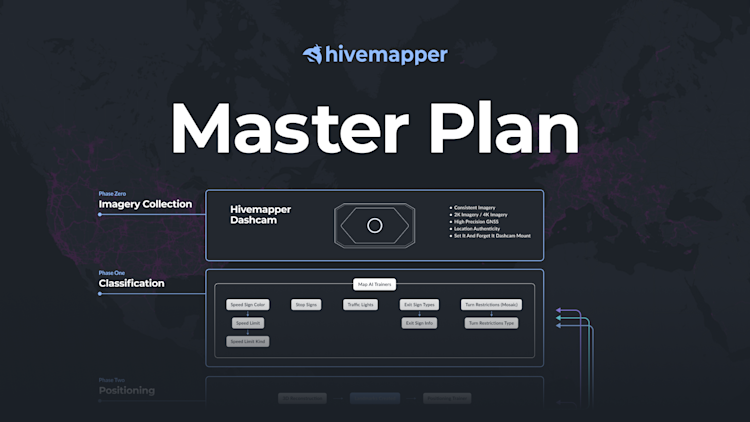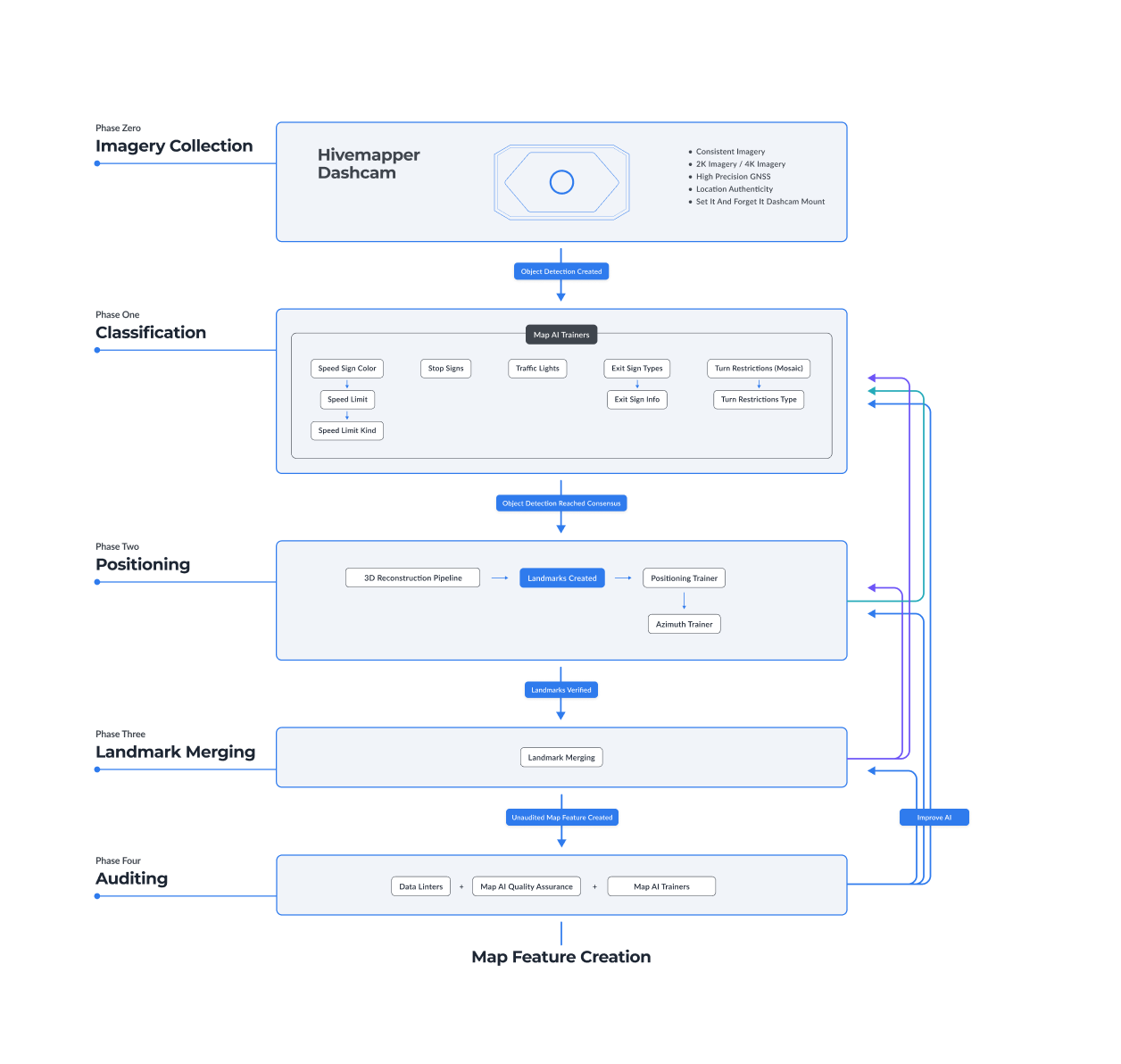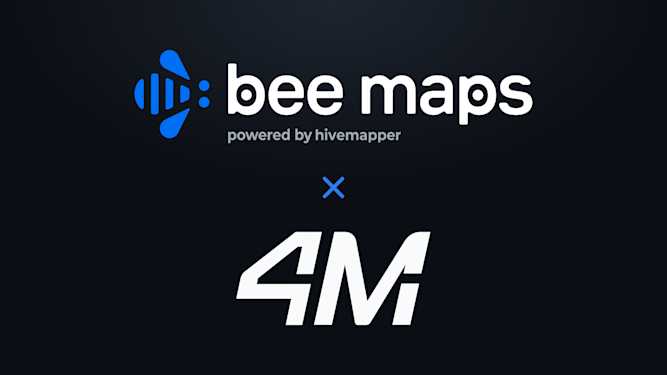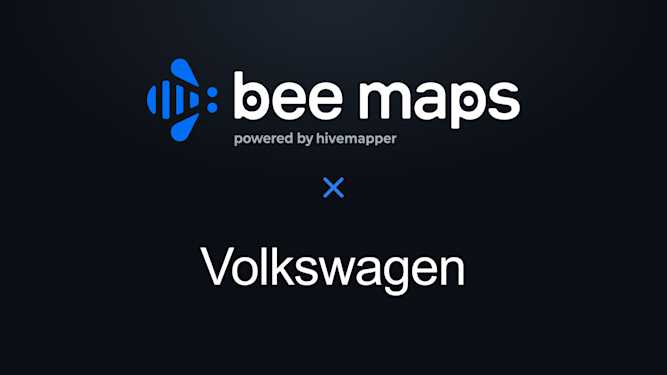The Network is Buzzing
The Hivemapper Master Plan (Just Between You and Me)

This is Part 1 of a series on how Hivemapper is building decentralized Map AI.
Ever since our ancestors started drawing on cave walls to point the way to the watering hole, humans have used maps to share the things we learn about our world.
When we use a modern mapping app, it feels like wizardry. In reality, tens of thousands of humans are working anonymously behind a digital curtain to build those maps for us.
Some humans drive around in special cars just to take pictures of the world. Other humans look at those pictures and draw lines and symbols representing the roads, traffic signs and natural features that make up a map. It is the same work our ancestors did, just with the added efficiency of doing it on a computer instead of a cave wall.
Doing that work at a global scale in a centralized way is staggeringly expensive. This is why mapping is dominated by trillion-dollar corporations such as Google, which extracts monopoly profits from all the builders who rely on their APIs.
Google doesn’t disclose the cost of map collection, but with 60 million km of roads in the world, collecting fresh imagery for the entire world every week would require hundreds of thousands of vehicles and tens of billions of dollars per year in operating costs. No wonder so many Google Street View images are years out of date.
And yet, these roads are driven every day. In the United States alone, humans drove 3.26 trillion miles in 2022, or 8.9 billion miles per day. So why not build a decentralized collection network on par with Google Maps by capturing map data for the miles we already drive, reducing traffic, carbon emissions and cost?
It wasn't feasible 10 or 15 years ago, but it is now.
An old idea, newly possible
Community-led mapmaking is not a new idea, but until recently scaling decentralized map data collection wasn't technologically feasible.
Cameras were expensive, as were hard drives big enough to store a day’s imagery. Image quality was poor. Data upload speeds were slow, even over a wired connection. (In some cases, people found the quickest and most reliable approach was shipping physical hard drives to a data center. Seriously!) Computer vision was immature enough that it made more sense to let humans do the data processing.
Shaped by these limitations, previous efforts at crowdsourced mapping have a fatal flaw. Relying on humans to draw lines and symbols (just like our ancestors did) results in a map that is inconsistent and unreliable for many use cases and customers.
We at Hivemapper think a far better approach is to let AI and humans do what they do best.
Today’s cheap electronics, fast upload speeds, plentiful data storage and rapidly improving AI capabilities have finally made it possible to replicate Google’s mapping fleet in a decentralized way. With so many miles being driven every day in our daily lives, we can do it as a community while driving miles that we were going to drive anyway.
Last year we introduced the purpose-built Hivemapper Dashcam, which allows the Hivemapper community to collect high-quality map data more reliably than any cell phone mounted on a dashboard can manage.
But dashcams are not our product. In fact, we plan to open-source the hardware reference design and DashcamOS software in 2H 2023. That's because dashcams are an enabler for our community’s main goal, which is building an AI mapmaking engine that produces an incredibly fresh and high quality map.
We are now focused on building this AI mapmaking engine. Our Map AI can now automatically detect the objects that make up a map, such as speed limit signs, stop signs and traffic lights, and then position them correctly in the map. Thousands of members of the community are using AI Trainer tools to help the AI do a better job of identifying objects and placing them in the physical world. (We’re going to share a lot more information in an upcoming blog post.)
With every improvement to the AI, the Hivemapper network will build a fresher and more accurate map, and share the value with the humans who made it possible.
Hivemapper's master plan - don't tell anyone
The naysayers say it’s impossible to unseat a dominant monopoly such as Google Maps.
The history of technology suggests the opposite.
Every so often a new technology arrives – the printing press, the Internet, smartphones – and revolutionizes how maps are built and used. The leaders of one era, such as Rand McNally, Mapquest or Garmin, very rarely win the next.
This pattern holds true for most technologies.
Seventeen years ago, Elon Musk wrote a blog post about his fledgling startup, Tesla, which had far more ambition than cash in the bank. Critics scoffed that Tesla’s first car, a low-volume sports car starting at $98,950, wouldn’t do much to solve climate change.
Musk laid out a simple four-step plan explaining Tesla’s “master plan”:
- Build sports car
- Use that money to build an affordable car
- Use that money to build an even more affordable car
- While doing above, also provide zero emission electric power generation options
Don’t tell anyone.
It is stunning to read in retrospect, because that’s exactly how the coming years unfolded.
Trends come and go, but Hivemapper will remain true to its vision. It is a vision of a map built by a hivemind of AI and humans, hand in digital hand. A map built for builders, not for billionaires’ profit. A map built by a decentralized global community to convey the objective truth about the world, unfiltered by any corporation or government.
We haven’t talked much about Hivemapper's master plan. But it’s actually quite simple.
- Build a decentralized, AI-powered map network
- Make money selling data to improve other companies’ maps and databases
- Use that money to build a full set of builder-friendly tools for developers and enterprises
- While doing above, fairly reward the humans who built the map together
Don't tell anyone.



